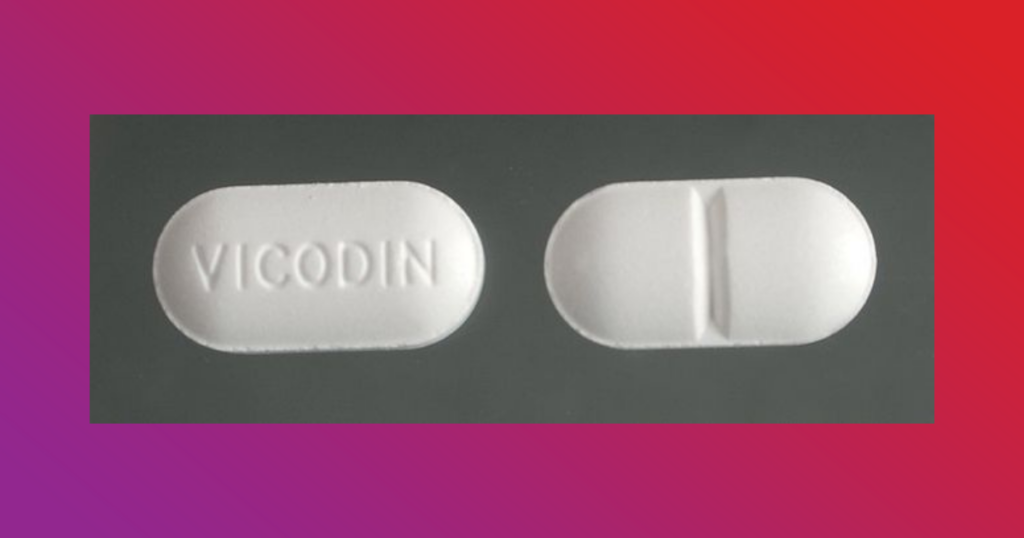Have you ever found a pill labeled “M367” and wondered what it was? Understanding what’s inside our medication is crucial, whether it’s a loved one’s pills or something prescribed to you.
M367 is more than just a number – it’s a code for a common prescription painkiller that might be in your home right now. This blog dives into everything you need about M367, including its uses, side effects, and the risks associated with counterfeit versions. Protect your family and yourself with pill identification information.
What is M367?
M367, commonly known as Vicodin, is a medication that combines hydrocodone and acetaminophen and is prescribed to manage moderate to severe pain. Hydrocodone is an opioid, while acetaminophen is an over-the-counter pain reliever.
How It’s Made and Where It’s Found
Pharmaceutical companies produce M367, which is available by prescription only. Hydrocodone is synthesized from codeine, an opioid alkaloid in the opium poppy. Acetaminophen, found in over-the-counter medications like Tylenol and Excedrin, is available at pharmacies, drug stores, supermarkets, and convenience stores.
How M367 Works in the Body
M367 combines two active ingredients: hydrocodone and acetaminophen. Here’s how they work together to relieve pain:
- Hydrocodone: This opioid is a pain medication that attaches to proteins called opioid receptors in the brain and other body parts. When it connects, it blocks pain feelings. Think of opioids like a key fitting into a lock, making it difficult for pain messages to travel to the brain.
- Acetaminophen: This chemical doesn’t block pain signals like hydrocodone. Instead, Acetaminophen lowers the body’s overall pain sensation by reducing substances that cause pain signals to be sent out and increasing hydrocodone’s effects.
These two M367 ingredients work hand-in-hand to reduce and relieve pain, making you feel more comfortable.
Connection to Other Medications or Substances
M367 shares similarities with other opioid-containing medications like OxyContin and Percocet. It has the same addictive potential and should be used under medical supervision.
Nicknames and Brand Names
Depending on the context and location, M367 might have different names that might sound familiar. Recognizing these names can help you or a loved one identify the drug and be aware of its use.
Brand Names
Nicknames
- “Vikes”
- “Hydros”
- “Loris”
- “Watsons”
- “Tabs”
- “Happy Pills”
- “367s”
Stay aware of these terms to avoid misuse, counterfeit versions, or potential risks.
Short- and Long-Term Side Effects of M367
Common Side Effects
If you’re taking M367 pills, you might experience:
- Dizziness
- Feeling tired
- Nausea or vomiting
- Stomach pain
- Constipation
- Headache
These are familiar side effects, but consult a healthcare provider if they become long-lasting.
Severe and Rare Side Effects
Serious side effects of hydrocodone and acetaminophen medications can occur and require immediate attention.
- Allergic reactions: Hives, difficulty breathing, face swelling (lips, tongue, or throat)
- Breathing Problems: Opioid medicines like hydrocodone can slow or stop breathing, leading to death. Seek emergency help for slow breathing, blue lips, or difficulty waking up.
- Skin Reactions: Rarely, a fatal skin reaction might occur. Call your doctor if you have skin redness, rash, blistering, or peeling.
- Liver Problems: Symptoms like upper stomach pain, dark urine, and yellowing of the skin or eyes may indicate liver issues.
- Low Cortisol Levels: Nausea, vomiting, loss of appetite, dizziness, or tiredness.
- High Serotonin Levels: Agitation, hallucinations, fever, muscle stiffness, loss of coordination, or gastrointestinal issues.
These symptoms may be more likely in older adults or people with chronic breathing disorders.
What to Do If Side Effects Occur
This is not a complete side effects list, and you should consult your doctor for more information. If you experience any of these serious or rare side effects:
- Seek emergency medical help for severe side effects
- Contact your doctor immediately
- Report side effects to the FDA at 1-800-FDA-1088
- Follow professional medical advice
Abuse and Addiction Risk Factors
M367 contains hydrocodone, an opioid with a high abuse potential and dependence (addiction). The risk factors that may lead to abuse include:
- Personal or Family History: Previous addiction to drugs or alcohol or a family history of addiction.
- Mental Health Issues: Anxiety, depression, or other mental health disorders can make a person vulnerable to abuse and addiction.
- Chronic Pain: Prolonged use for pain management may lead to dependence.
- Accessibility: Easy access to the medication increases the chances of abuse.
Signs of Addiction and Dependence
If you or a loved one is taking M367 pain pills, be aware of signs of addiction or dependence:
- Increased Usage: Taking more than prescribed or for extended periods.
- Withdrawal Symptoms: Experiencing physical or emotional withdrawal when not using the medication.
- Neglected Responsibilities: Focusing more on obtaining the drug and neglecting work, school, or family obligations.
- Failed Attempts to Quit: Multiple unsuccessful attempts to reduce or stop using.
Legal Status
M367, due to the opioid content, is classified under Schedule III of the Controlled Substances Act. This designation means it has a lower abuse potential and abuse risk that can lead to mental or physical dependence. A Schedule III classification requires you to get an M367 prescription through a prescription from a licensed healthcare provider, such as a doctor or pharmacist.
If you or a loved one needs this medication for pain relief, ensure you get a prescription through a healthcare provider to avoid health risks and legal issues.
Counterfeit M367 Pill Risks
Counterfeit versions of M367 exist because of the demand for pain relief and the addictive nature of hydrocodone. Illegal manufacturers may replicate these pills with inconsistent or harmful substances, including fentanyl, to maximize profit.
Consequences include:
- Increased Overdose Risks: Fentanyl is 50 to 100 times more potent than morphine, making it easy to overdose accidentally.
- Health Consequences: The unknown structure of counterfeit drugs can lead to unexpected reactions, long-term health problems, or even death.
According to the World Health Organization (WHO), over 10% of medicines in low- and middle-income countries are fake. In the United States, the Drug Enforcement Administration (DEA) has reported significant seizures of counterfeit pills containing fentanyl, highlighting the real and growing risk.
What M367 Pills Look and Feel Like
M367 pills are usually white, oblong tablets with “M367” printed on one side. Knowing the exact appearance helps you identify genuine pills.
Identifying Counterfeit Versions
Counterfeit versions may differ in color, size, shape, or texture. The following might be signs of a fake product:
- Imprint smudges
- Unusual taste
- Altered effects
What to Do if You Suspect a Counterfeit Product
If you suspect you have a counterfeit version of M367, don’t consume it. Contact your doctor or pharmacist for advice. Report the incident to your local authorities to help prevent others from experiencing the same risk.
Treatment and Recovery Options
Prescription drug misuse is a national problem. In 2021, around 8.7 million Americans misused prescription pain relievers like M367. This trend proves how important drug treatment and recovery options are. Landmark Recovery can help with an opioid addiction.
When and Why to Seek Professional Help
When M367 addiction impacts your health, relationships, or responsibilities, professional help is vital. Addiction treatment creates a path to tackling root causes and providing recovery tools to renew your life.
Available Treatments
With medical care, therapy, and recovery support, addiction to M367 is treatable. Medical detox helps manage withdrawal symptoms, followed by custom rehab programs.
What’s Next?
M367 might be in your medicine cabinet, but do you know its risks? Addiction, harmful side effects, and counterfeit dangers are real concerns. If you or someone you love struggle with abuse, you don’t have to face it alone. Help and hope are just a phone call away.
Call Landmark Recovery at 888-448-0302 and begin your recovery journey today.

Choose Recovery Over Addiction
We're here 24/7 to help you get the care you need to live life on your terms, without drugs or alcohol. Talk to our recovery specialists today and learn about our integrated treatment programs.





